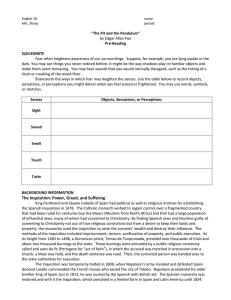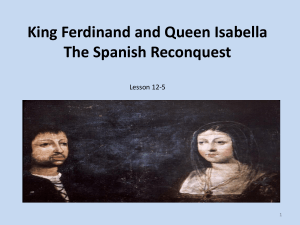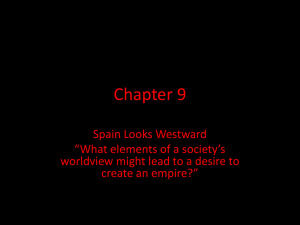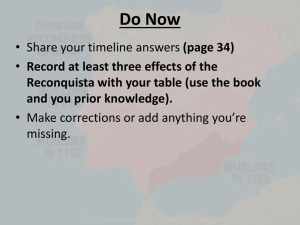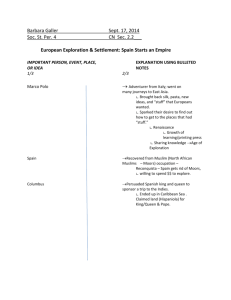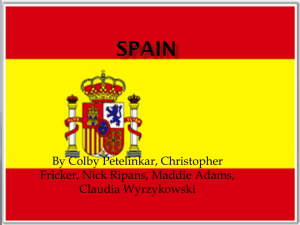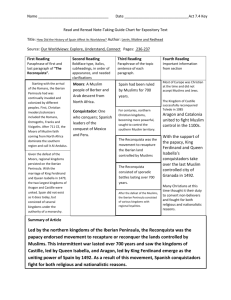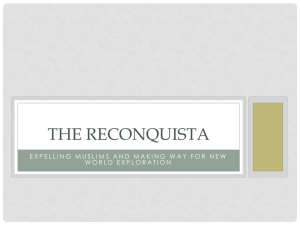Chapter 9 Creating a Christian Spain
advertisement
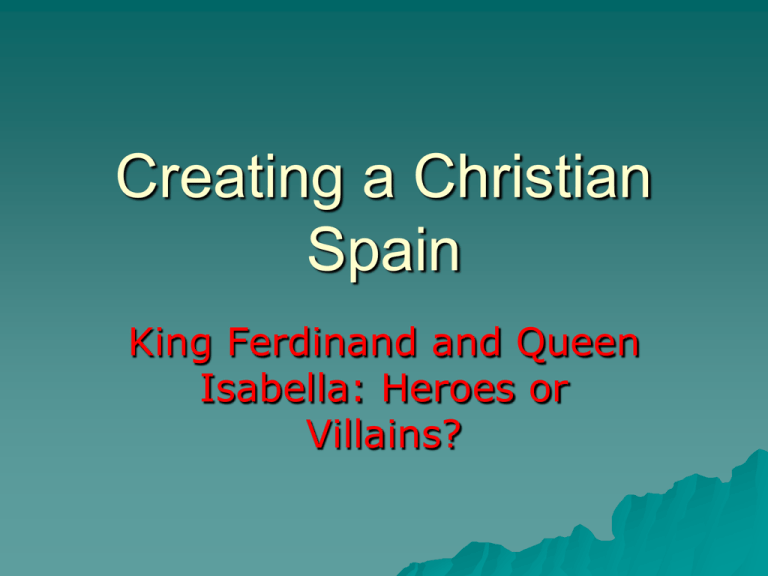
Creating a Christian Spain King Ferdinand and Queen Isabella: Heroes or Villains? The Reconquista The Reconquista was when the Spanish took back Spain from the Muslims. It was a long process: it started in 1085 and ended in 1492. Creating a Christian Spain King Ferdinand and Queen Isabella were “Catholic Monarchs” of Spain. They wanted to unite Spain under one religion. The Spanish Inquisition In 1478, King Ferdinand and Queen Isabella took over the Spanish Inquisition – a system of courts where Church officials put nonCatholics on trial. Muslims and Jews were given a choice – convert or be exiled. http://www.youtube.com/watch?v=u prjmoSMJ-o Exploring Sources Read the excerpt on the expulsion of the Jews from Spain on page 203 of your textbook. Answer the 3 questions They were given only a short time to get and they had to sell everything. However they could not take gold and silver with them so they would have lost a lot of their wealth. It suggests greed was also a motive. The Jewish people in the picture look very stressed and overcome with fear and fatigue. The Christians are using force against the Jews and are taking their possessions. The Trial There were hearings, in which both the denouncers and the defendant gave testimony. The Tribunal of the Inquisition Francisco de Goya The Trial There were hearings, in which both the denouncers (the people accusing) and the defendant gave testimony The accused was interrogated and torture was often used to obtain a confession The Trial The application of the garrucha, consisted of suspending the criminal from the ceiling by a pulley with weights tied to the ankles, with a series of lifts and drops, during which arms and legs suffered violent pulls and were sometimes dislocated. The potro, the rack, was the instrument of torture used most frequently. Sentencing The results of the trial could be the following: The defendant could be acquitted (set free) – this was rare. The process could be suspended, in which the defendant went free, although under suspicion, and with the threat that his process could be continued at any time. Your punishment could be: exile, fines or sentence to jail or the galleys (ships), confiscation of all property, or physical punishments (i.e. whipping). The most serious punishment was burning at the stake. Execution was public. If the condemned repented, he or she was strangled before the body was given to the flames. If not, he was burned alive. At the beginning of the Inquisition 40% of cases before 1530 resulted in the death penalty. The Effect of the Inquisition The expulsion of Jews and Muslims had negative effects because the Spanish Jews and Muslims were a large part of the educated middle class (business people and investors). Without these people, it was difficult for Spain to grow economically. Saving Souls King Ferdinand and Queen Isabella thought they had a religious duty to convert as many people as possible to the Catholic faith within Spain and beyond its borders. This is one of the reasons Spain decided to support Columbus. He promised that in the new lands there would be millions of people to convert to Catholicism. Saving Souls Missionaries went with Spanish explorers on their voyages. Missionaries are men and women from religious orders who had the authority to teach and convert people to Catholicism. To describe the acts of Christians in earlier times, such as the Crusades and the Spanish Inquisition, Pope John Paul II used this phrase: Violence in the service of the truth 1) What does this mean? 2) Can you think of something you did in the past which today you think is wrong? Memory and Reconciliation In 2000, Pope John Paul called for repentance (recognize the wrong in something you have done and be sorry about it) for acts committed by Christians (such as the Spanish Inquisition and the Crusades) He also sought forgiveness for the forced conversion of Indigenous peoples. Should Ferdinand and Isabelle be considered heroes or villains? 17 17
